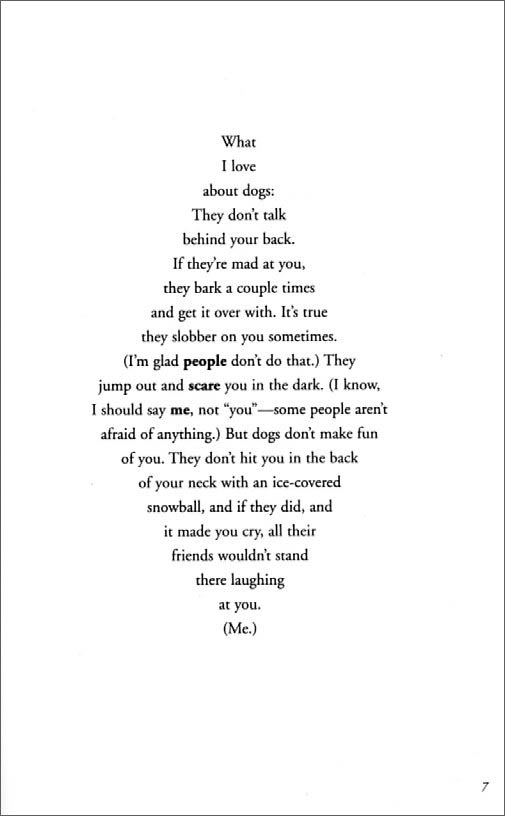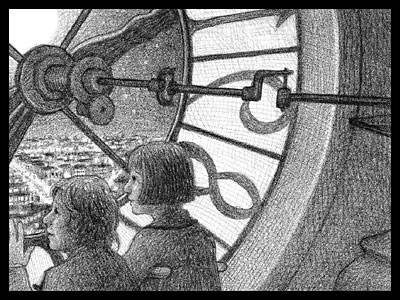 With the advancement of technology, and people complaining that all possible stories have been told, it's only common sense to realize that the way we read, or in which a story is presented to us, would change.
With the advancement of technology, and people complaining that all possible stories have been told, it's only common sense to realize that the way we read, or in which a story is presented to us, would change. Besides the obvious changes in delivery method, such as the audiobook and e-readers, print resources have changed too. Gone are the days of the staunch categories I knew as a child: "Books with pictures," "Books without Pictures," and "Comic books." Now we have whole book series written in technical electronic languages, such as in TTYL (by Lauren Myracle), which is written entirely in the manner of a tween/teen text message conversation, abbreviations, emoticons, acronymns and all. It makes me wonder if there isn't a novel out there somewhere written entirely in HTML or Pearl languages, because these have become real, digital languages that people live a good portion of their lives in, whether or not they are spoken.
 I've also seen books (poetic novel) that had no paragraph structure, or at the very least, no conventional structure. Instead, the text was fit into poem form in a diamond shape in the middle of each page. (Diamond Willow by Helen Frost)
I've also seen books (poetic novel) that had no paragraph structure, or at the very least, no conventional structure. Instead, the text was fit into poem form in a diamond shape in the middle of each page. (Diamond Willow by Helen Frost) Or instead, take the celebrated book, The Invention of Hugo Cabret, by Brian Selznick, a novel told not just in words, but in pictures, as in the pictures move the story. They are the story. The don't just sit there and support the text. They are a new form of text. Without them, the book doesn't make sense, and that's an odd sensation for the traditional reader. But the same could be said of the award winning children's picture book, Tuesday by David Weisner , which has no words in it whatsoever, but is still beloved and adored around the world.
Or instead, take the celebrated book, The Invention of Hugo Cabret, by Brian Selznick, a novel told not just in words, but in pictures, as in the pictures move the story. They are the story. The don't just sit there and support the text. They are a new form of text. Without them, the book doesn't make sense, and that's an odd sensation for the traditional reader. But the same could be said of the award winning children's picture book, Tuesday by David Weisner , which has no words in it whatsoever, but is still beloved and adored around the world. Now how is that for story delivery? A book with no written word, conveyed with absolutely no direction but through illustration forcing the reader to really analyze the situation in the book and come to their own conclusions. How often can you say that has happened in your past reading experiences, except if you have ever had the priviledge to read a choose-you-own-adventure novel?
In a world were sensory stimuli is delivered almost instantaneously, it is understandable that different methods have to be used to interest, and sustain readers and their reading. Different lengths of attention span, spatial abilities and cerebral processing require us to be more diverse in the way that we transmit stories and entertain. However, the method of delivery can also become an issue in maintaining interest.
Certain minds are attracted to these unusual stories, because they are challenging and different. Others have difficulty following the story or simply find it impossible because it doesn't make sense in their minds. I am somewhere in the middle myself and I will explain why.
One of the reasons I love to read fiction is because I like the story. I want to know what the author is trying to say, where they want me to look, and I want to be able to analyze what they thought the meaning was. I like the story. My difficulty in the delivery method of these newer titles is that the method of storytelling becomes so distracting that it's hard to focus on the story at all.
Take for example TTYL. I love to text message, abbreviate and use emoticons as much as the next girl but at some point every text conversation needs to have an end and I certainly hope that it doesn't last more than 100 pages. I couldn't even get all the way through TTYL because I just kept wishing it would end, that I could turn off the book and walk away...but that wasn't an option. The closest I could do was close the book and return it to the library for someone else, perhaps who has different preferences about storytelling and doesn't get that nagging feeling while reading it that she should be doing something else more important. I prefer much more depth.
Diamond Willow has plenty of depth and character development but it is still limited given the small space allowed for the telling of the story. There is so much that is conveyed with so little words, but even that is not enough for me. The diamond shaped text is, again, a HUGE distraction. I couldn't get through the first chapter, even though I really wanted to. I like the premise behind the book. I like that it's different. But I didn't like how much space was wasted...how much I wish there were secret messages in those gaping margins, because I felt like that is where the story really was...in the parts I couldn't see and didn't have access too.
Tuesday, I really love the illustrations. I liked reading it to my daughter too, but it took guided reading for her to get the most out of the book, and I do not want to be guided through my reading as an adult. I want to be able to do it on my own and compare my thoughts and opinions to those of the author. However, you can't do that without direction from the author and I certainly wasn't getting that from the non-existant text. I actually chose not to purchase this book simply because it took so much analysis and so many questions to be answered just to understand the concept of the book itself.
Hugo, however, I like. It's unusual and I still have to wrap my brain around it but it moves very much like a comic book or graphic novel (because really, it is a sort of a graphic novel hybrid) and that works for me.
Basically, it comes down to: each formate is different. Each has value. But the extent of that value can only be determined by those who attempt to venture into its pages. When confronted with these titles, the reader is always going to have to evaluate, " Is this book for me? How do I feel about it?" Sometimes I don't want to evaluate...I just want to read.

No comments:
Post a Comment